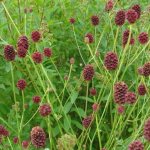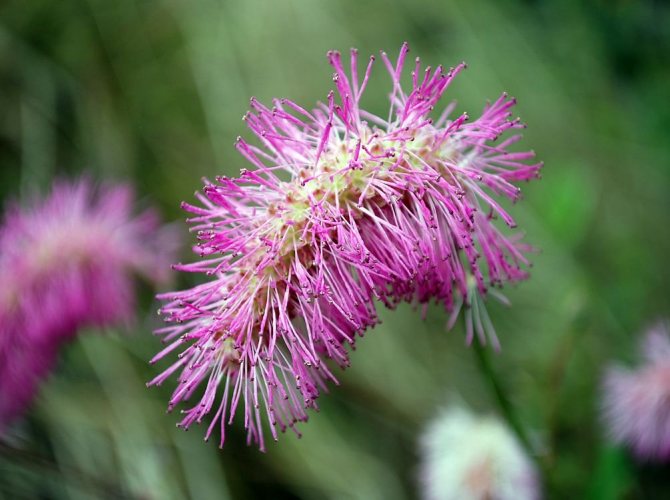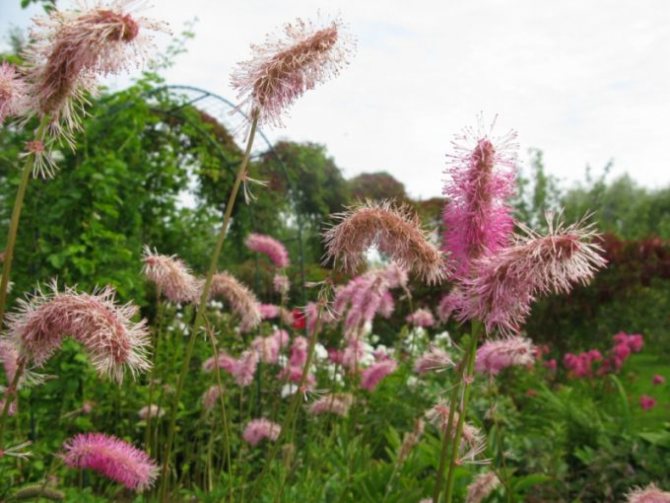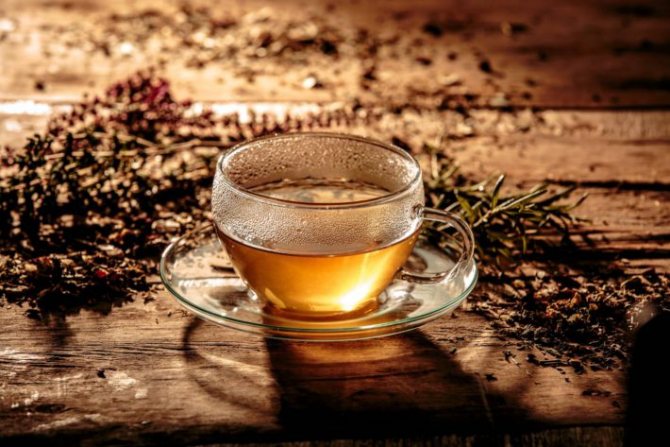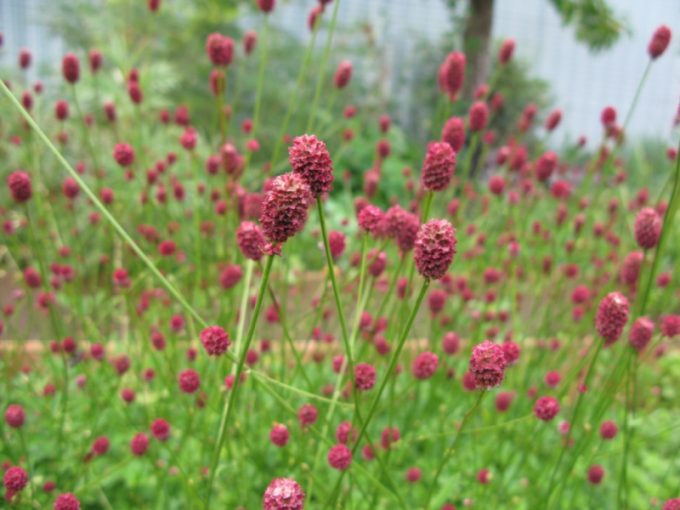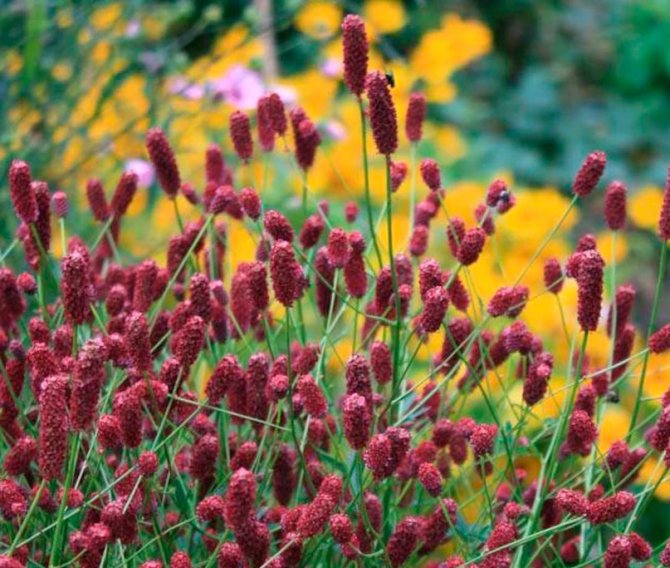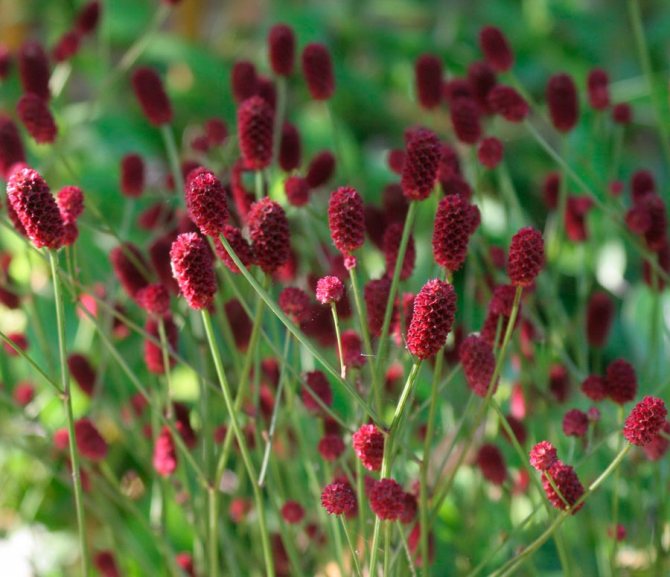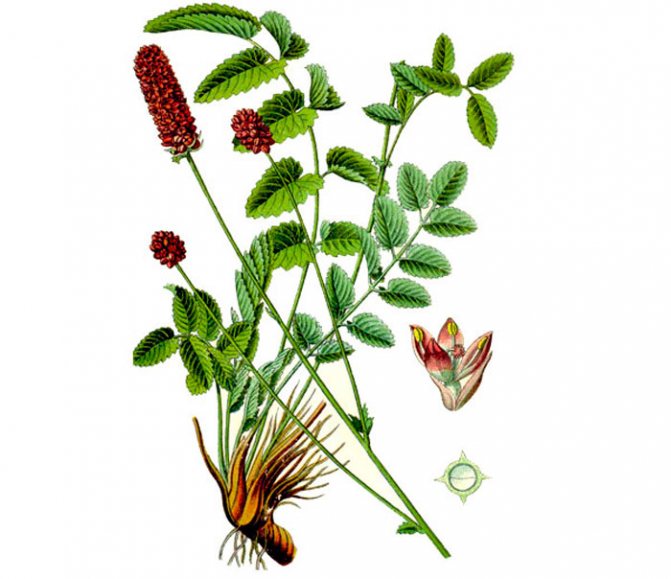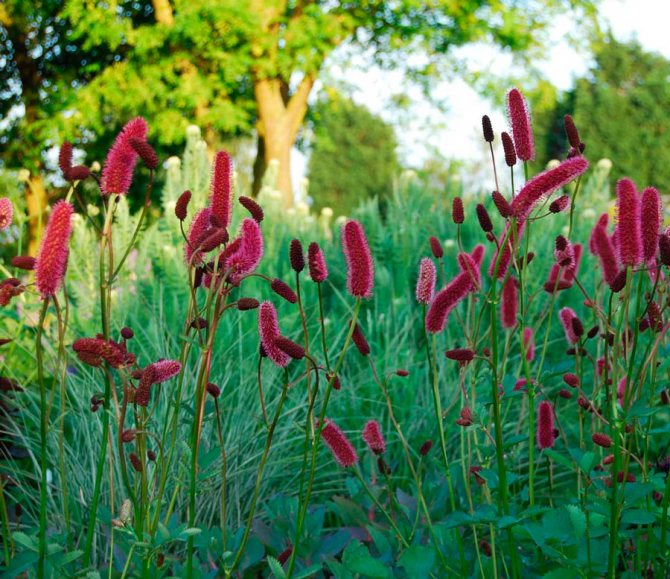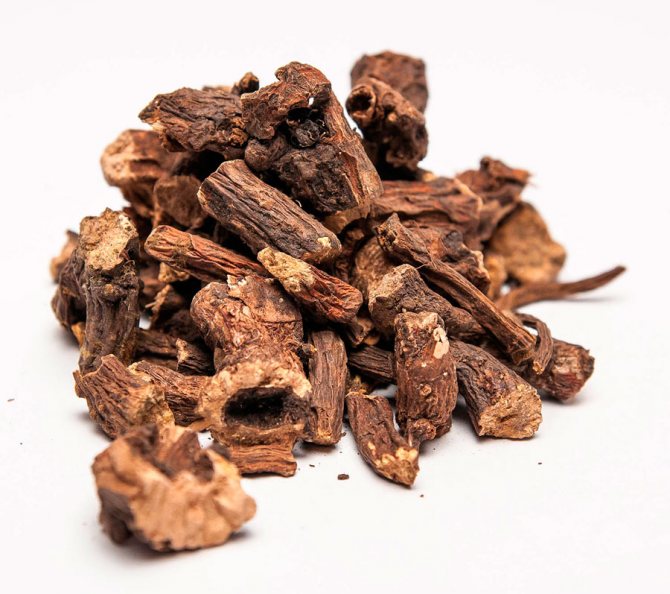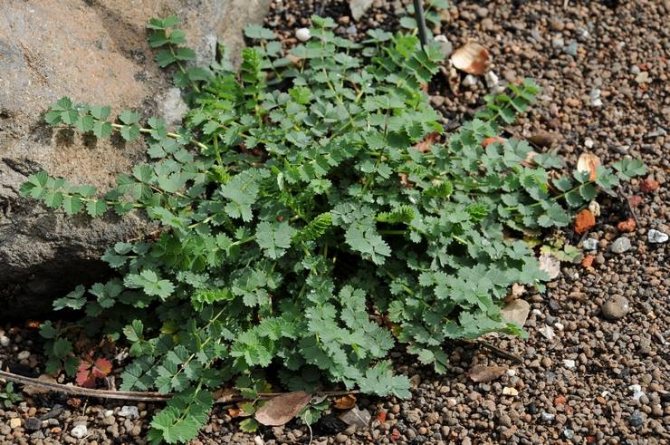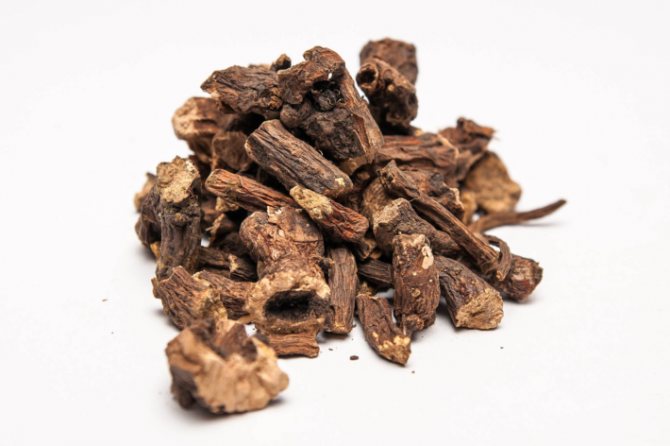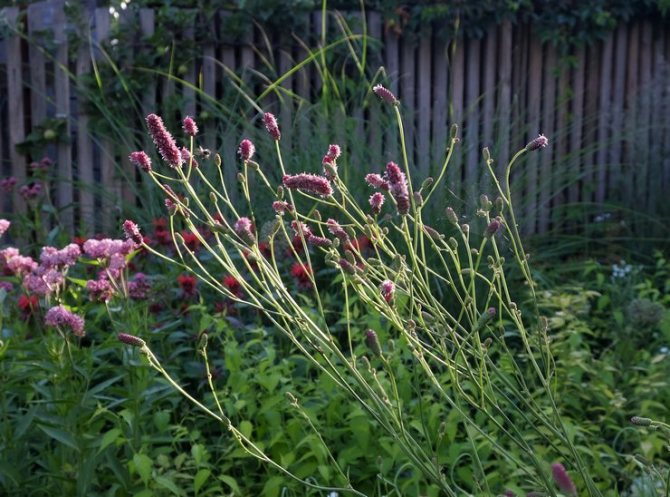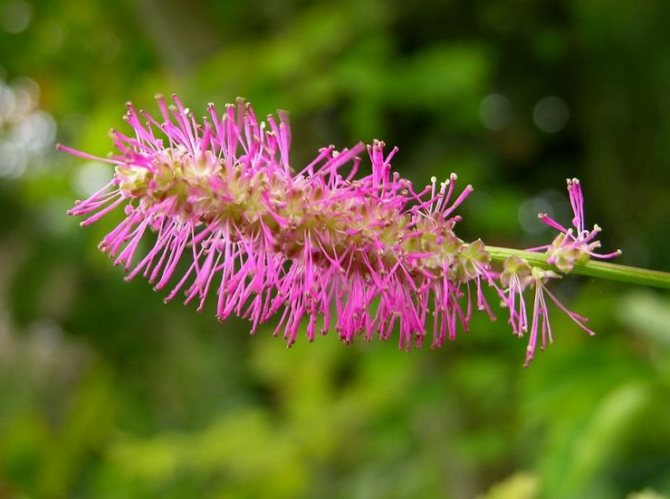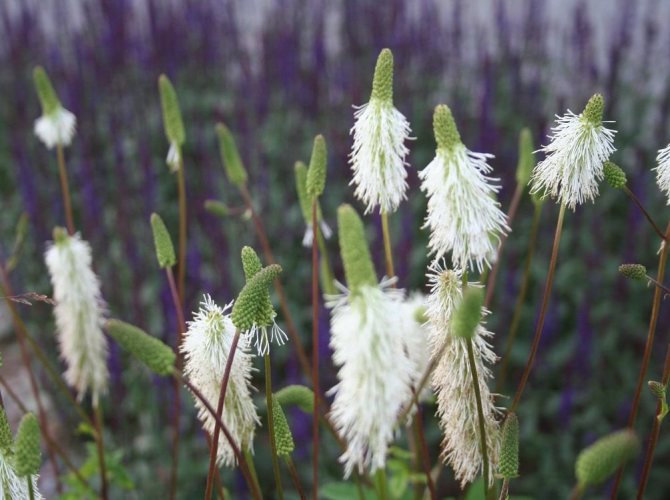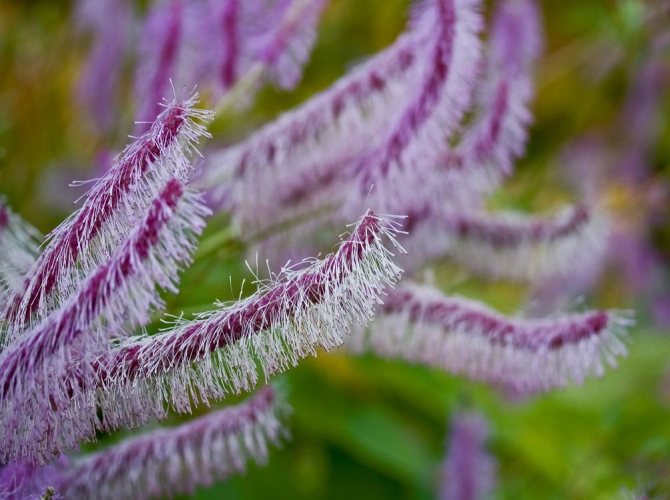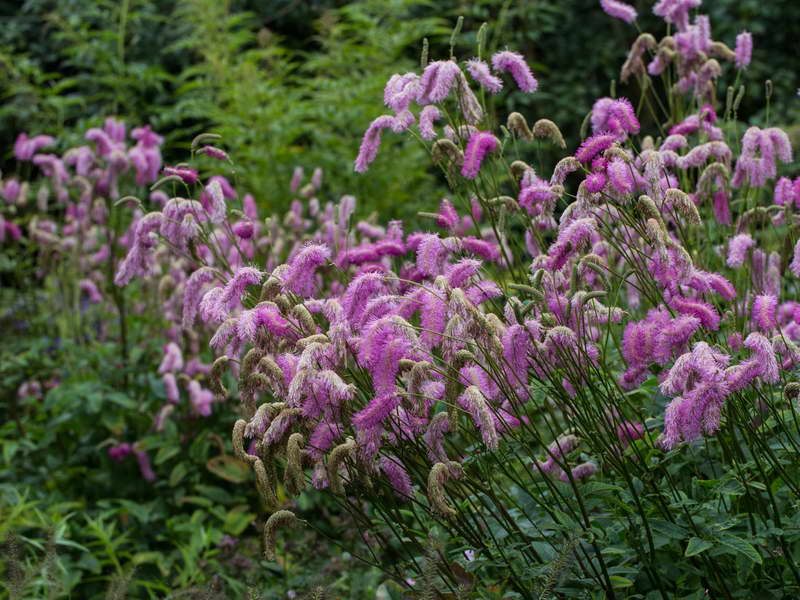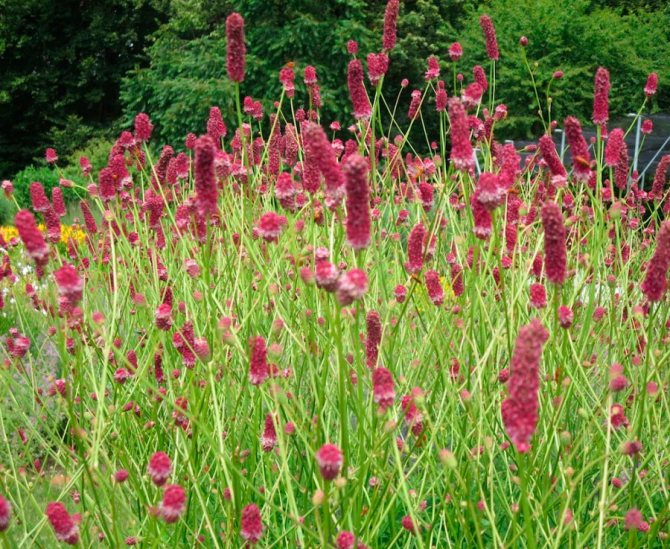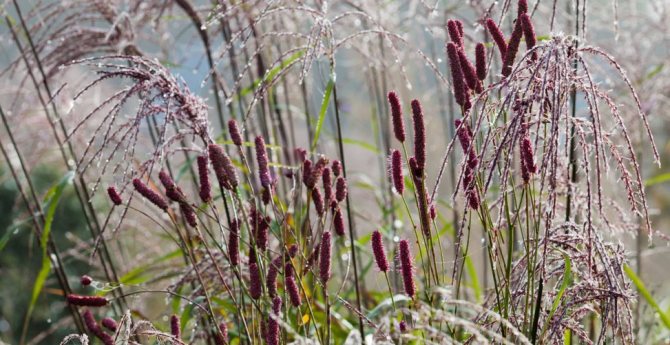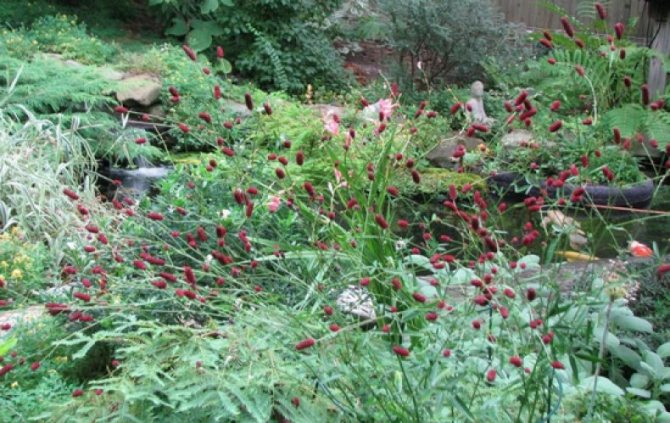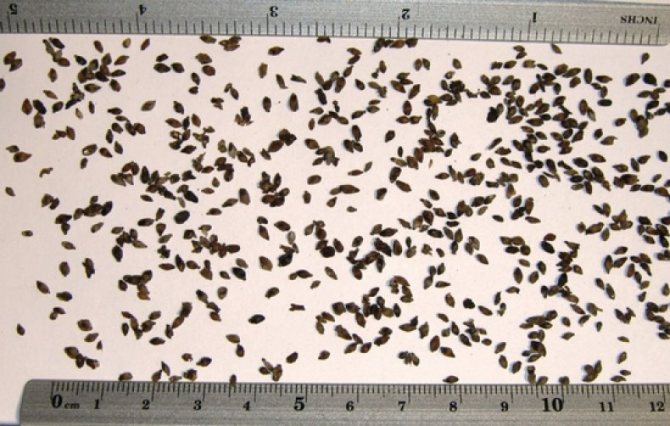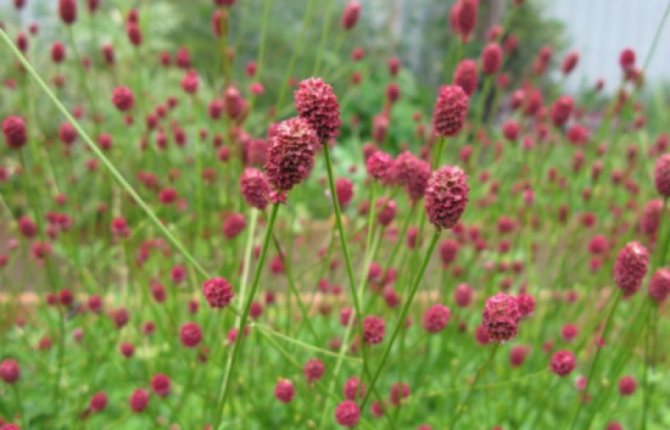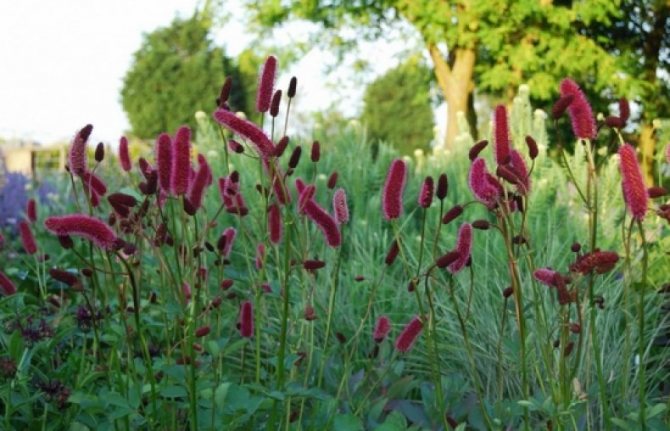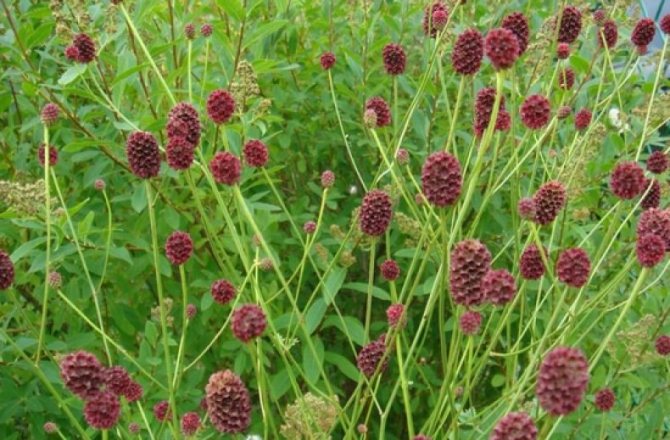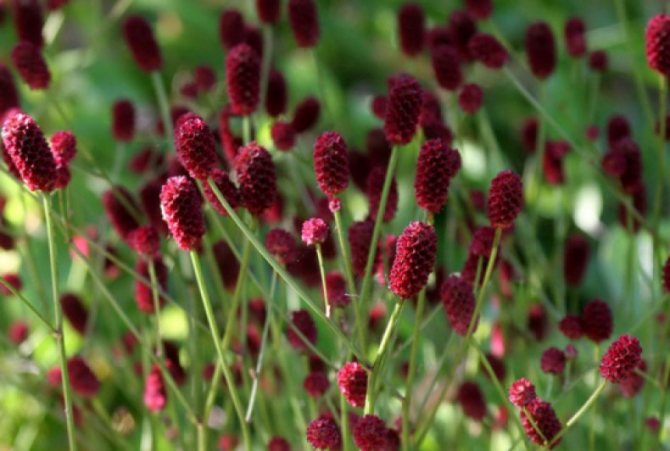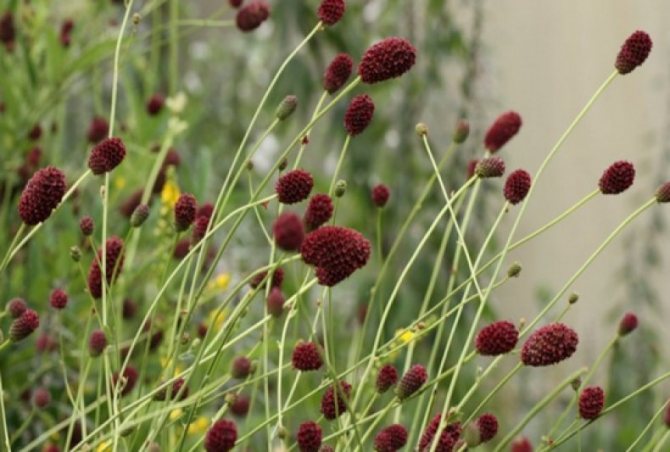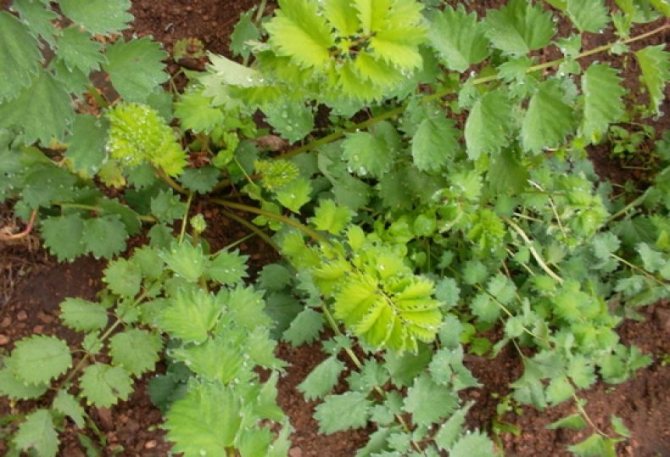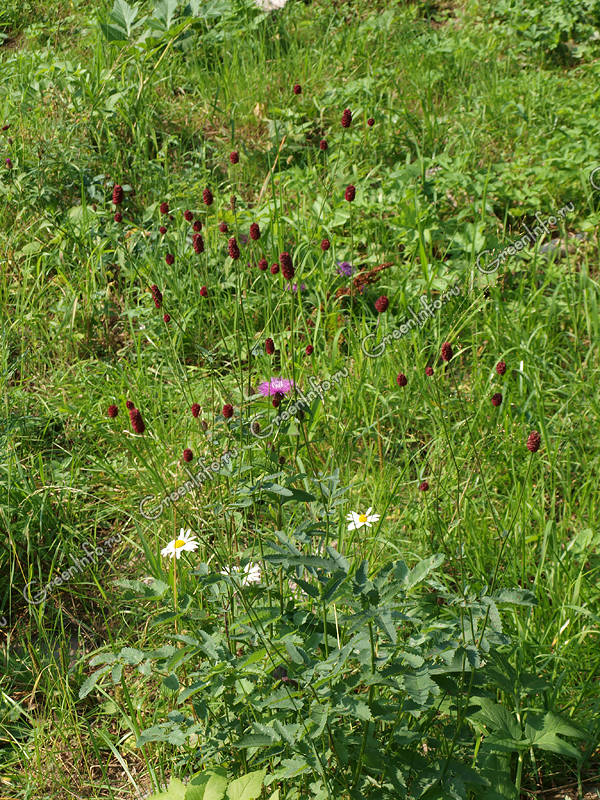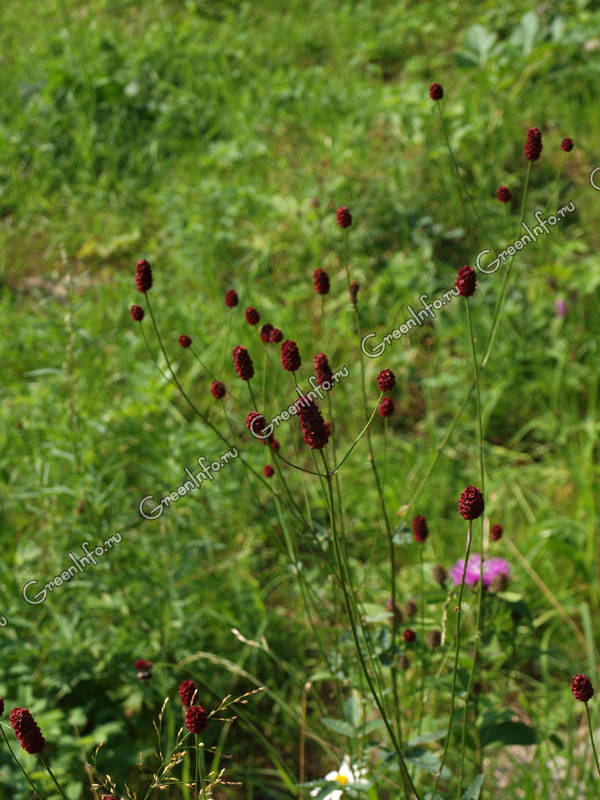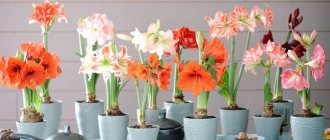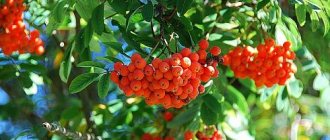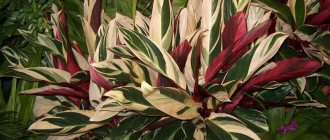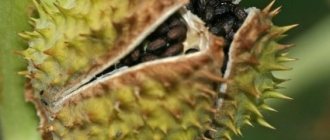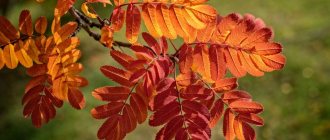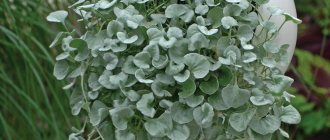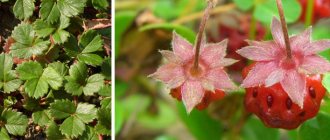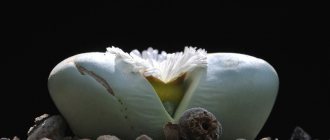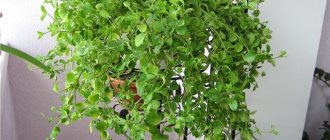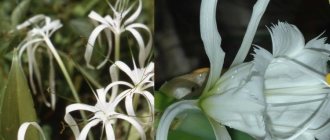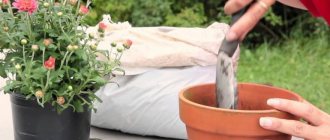The herbaceous burnet (Sanguisorba) is part of the Rosaceae family. In the wild, you will immediately notice this flower, since it has shoots of a rich dark green hue with spectacular openwork leaves, as well as unusual pinkish inflorescences that have the shape of spikelets or cones. The name burnet was given to such a plant for a reason, this is due to the fact that it has the ability to stop bleeding.
Scientifically, the burnet is called sanguisorba. Under natural conditions, it can be found in North America and Eurasia, and it prefers a temperate climate. This plant is capable of growing rapidly, while forming whole thickets. Especially often, such thickets can be found in the coastal zone, as well as on forest edges. Burnet thickets can also be seen at the foot of the Caucasian mountains.
The use of burnet in traditional medicine
The first mention of burnet as a medicinal plant dates back to the 16th century. In folk medicine, rhizomes are used along with roots. They contain tannins (about 25%), ellagic and gallic acids, losses, sterols, essential oil, gentriacontan, saponins, up to 30% starch, carotene, ascorbic acid.
Burnet liquid extract and decoction of rhizomes with roots are used as an astringent and hemostatic agent for various intestinal diseases (with dysentery, diarrhea of various etiologies, hemorrhoids), as well as with uterine bleeding, hemoptysis.
Burnet liquid extract can be prepared with 70% alcohol. It is prescribed 40-50 drops 3-4 times a day.
A decoction of roots and rhizomes is prepared at the rate of 6 grams of crushed product per 0.2 liters of hot water. Burnet broth is taken 5 - 6 times a day after meals for 1 tablespoon.
Features of cultivation of a garden burnet
Burnet, unpretentious to growing conditions, can grow in any places, including those with poor soil, as well as near water bodies. However, if the gardener wants the decorative varietal qualities of the flower to fully manifest themselves, a favorable environment should be created for him.
Location. This culture develops well in open sunny places, but only tolerates light shading. Therefore, it is better to choose a plot for her in the garden, where the burnet will be constantly under the rays of the sun. Then she will delight you with her delicate foliage and abundant flowering.
The soil. Prefers moist soils, but can grow in relatively dry places. It grows rather quickly on fertile soil.
Frost resistance. The plant hibernates in the open field without any problems. Does not require any shelter for the winter.
Watering. When caring for a burnet, you need to remember that during growth and flowering, abundant watering is needed, especially if there is not enough rain. In general, the plant responds well to moisture. Juveniles should be watered at least 3 times a week.
Top dressing. When planting a flower, 3 dressings are added per season. The first in April after the warm days set, using the mineral complex for garden flowers. The second - during flowering, using organic matter and mineral fertilizers. The third (the same as the second) - at the beginning of autumn, to prepare the plant for wintering.Pour the fertilizer solution under the bush.
Another care. The care of the burnet during its cultivation includes loosening the soil in order to provide the roots with air, prevent the appearance of a crust formed after watering or rain, retain moisture in the soil and eliminate weeds.
Tall bushes must be tied to supports, since thin stems can break under the weight of large inflorescences, or from strong gusts of wind.
To avoid unnecessary self-seeding, and at the same time the uncontrolled spread of garden burnet over the site, you should immediately cut off the faded inflorescence. In addition, it will preserve the decorative appearance of the bush.
Burnet growing
The medicinal plant burnet reproduces both by seeds and vegetatively = by segments of rhizomes.
For sowing seeds, you need to choose an open, sunny area. Seeds are sown in rows or holes, to a depth of no more than 0.5 - 1 centimeter. After sowing and watering, it is advisable to sprinkle them with peat crumb. Although the burnet is not very demanding on the soil, it still develops better on humus-rich, loose soils. Burnet can create a successful competition for weeds, however, like most plants, it is responsive to care, up to fertilizing with mineral and organic fertilizers. After the snow melts, in early spring, it is recommended to apply under the plants, at the rate of 30 - 40 grams per 1 square meter. They are closed carefully, not very deeply, with the help of a hoe, since the root system of the burnet is located in the surface soil layer. During the growing season, the soil must be kept loose and weeds must be removed in time.
Harvesting of the roots and rhizomes of the burnet:
Harvesting of roots and rhizomes should be carried out in the fruiting phase of plants, that is, at the end of August - September. Rhizomes need to be dug out, cleaned from the ground, shaken off, then cut off the stems and rinsed, preferably in running water. After that, spread the clean rhizomes on a sacking so that they wither in the sun. After that, you need to grind the rhizomes and continue to dry them in the sun, only already spread out in a thin layer on paper or fabric. Stir occasionally.
If you dry the rhizomes in an oven or oven, then the heating temperature cannot be higher than 55-60 degrees. Determining the readiness of dried raw materials is very simple. If the roots break when squeezed by hand, then the raw material is ready. The normal yield of dry raw materials is 25%.
Burnet roots have a shelf life of 4 - 5 years. Store the rhizomes in a dry, normally ventilated area in cloth or paper bags
For today this is all that I wanted to tell you about the wonderful medicinal plant Burnet. See you, dear friends!
Blunt Burnet is an ornamental plant native to Japan. Previously, it grew only in the wild and was used for medicinal purposes, but now it is widely used for landscape design in summer cottages and garden plots.
This type of burnet has rounded-oblong leaves that have a bluish tint. Outwardly, this culture resembles another variety - Magnificent. The only difference is that the blunt burnet has slightly smaller inflorescences. The buds of the plant are pink, reach a length of 6 cm, resemble a spikelet. They decorate the garden throughout August. This kind of culture is compact, but it cannot keep its beautiful shape. It is characterized by feathery leaves and long, thin stems.
Flowers are widespread in Kazakhstan, Europe, Siberia, Central Asia and the Far East. Under natural conditions, they grow in meadows, glades and river banks. Burnet is a perennial plant that gardeners have liked due to its elegant appearance, graceful leaves and spectacular slenderness.
This crop looks great in a flower bed among other flowers or in small groups near the lawn. In addition, the buds are often used for cutting. Burnet goes well with cereals, daylilies, mountaineers, meadowsweet and astilbe. The culture is often planted to decorate artificial reservoirs or near gazebos.
In addition to their decorative purpose, the roots of the plant have a number of medicinal properties:
- help with hypertension;
- relieve flatulence and diarrhea;
- relieve inflammatory processes on the skin;
- anesthetize for dislocations and bruises;
- help in the treatment of tonsillitis and stomatitis.
In addition, decoctions from burnet rhizomes effectively fight against cervical erosion and peptic ulcer diseases. Plant leaves are widely used in the culinary industry: they are added to salads, soups, fish dishes and various drinks.
Growing at home
Burnet - a plant that is quite undemanding to growing conditions, and caring for it, as a rule, is not difficult. However, even considering the above, there are special aspects of its cultivation, which you can find in more detail below.
Growing conditions
This plant does not need abundant sunlight, however, if you wish to fully reveal its decorative potential, it is recommended to plant the burnet in well-lit areas. Growing burnet in pots at home is certainly possible, but in practice, this tactic of breeding this plant is unproductive and can significantly complicate your care of it.
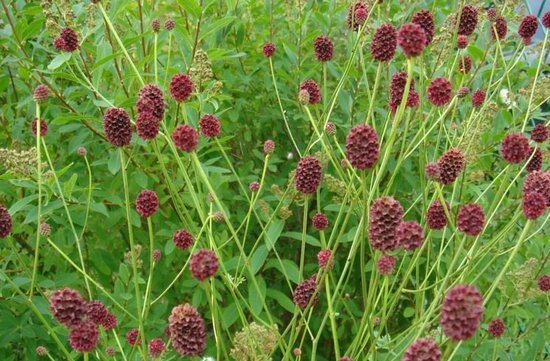
Cold grass very easily and without much harm to itself tolerates an abundance of various waters in the place of its growth, so there is no need to choose a site that would necessarily be located at a distance from the places of accumulation of surface groundwater and reservoirs. The plant also very easily tolerates the influence of wind and drafts, primarily due to the tight adhesion of leaves and flowers with stems, so this factor can be ignored when choosing a planting site for it.
It will be useful for you to learn more about the different types and properties of soils, fertilizer systems for them, how to independently determine the acidity of the soil on the site, how to deoxidize it, and also find out what depends on and how to increase soil fertility.
Soil and fertilizer
It is advisable to choose the soil fertile, rich in various mineral and organic compounds, it will be best to plant it on chernozems with a loose, crumbly structure. Sandy loam and clay soils with a porous texture are also suitable. The acidity of the soil should be within neutral or, in extreme cases, slightly acidic. Alkaline soils are poorly conducive to adequate growth and development of this plant.
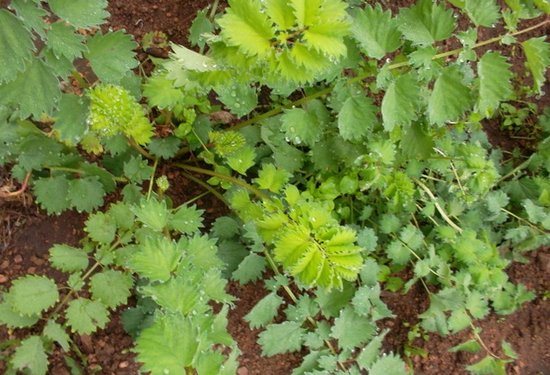

A meadow with an adequately chosen place and soil for it does not require any additional fertilizing before planting and during its growth, but if you see that the plant clearly lacks fertilizers, then you should spend 2-3 cycles of alternating mineral and organic fertilizing. As a mineral supplement, superphosphate is suitable at the rate of 150-200 grams per bucket of water, and for feeding with organic matter, you can use mullein or fermented bird droppings diluted with water 1:10.
Important! Please note that new grass
within 5-7 yearsit is impossible to plant in the place of growth of old thickets because of the phenomenon of "soil fatigue", and also because parts affected by various diseases and parasites can remain in the soil, from which new plants can become infected.
Fertilizing the plant in question is best before sunrise or after sunset., since when fertilizers interact with the sun's rays, a chemical reaction may occur, during which the plant will burn the stems.It is necessary to pour water with fertilizers directly under the root, trying not to soak the stems and leaves. If you intend to plant the burnet in infertile soil, it is recommended to pre-fertilize it once with superphosphate in the above dosages.
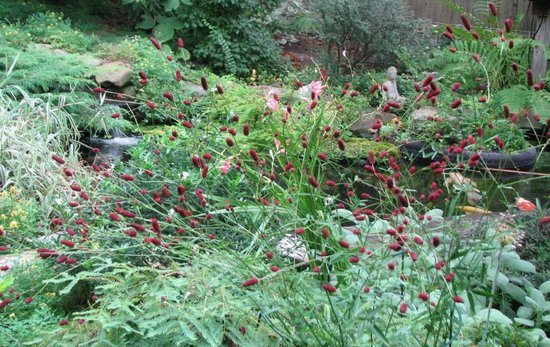

Watering and moisture
Burnet for its normal growth and development requires a fairly large amount of water resources, therefore, it is recommended to water it daily at the rate of 1 bucket of water per 1-2 square meters. In this case, the water must necessarily be cold, preferably so that it is settled, well or from an artesian well, since the chlorine contained in tap water can lead to the loss of the bright and attractive color of the burnet.
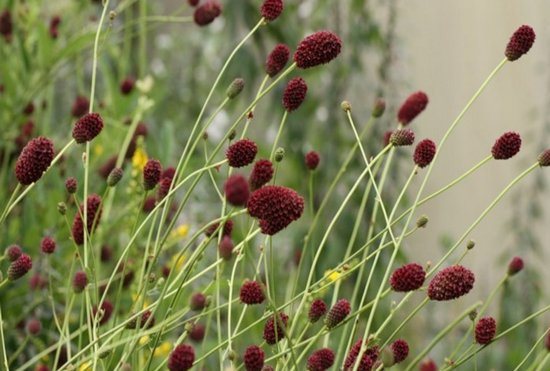

It is also desirable that the humidity of the air around the plant be maintained at a level that is approximately equal to its endemic habitat, that is, about 60-80%. To do this, you can simply water the plant abundantly in accordance with the above proportions, and if this is clearly not enough, and you see that it begins to fade, you can additionally spray your own arrow from a spray bottle with water once a day, preferably before sunrise. In particular, it is worth actively watering the burnet in hot and dry summers.
Learn how to grow plants at home such as: juniper, lavender, rosemary, savory, asplenium fern, thuja indoor, coffee tree, azalea, Kalanchoe, anthurium, geranium, orchid, spathiphyllum, violet, begonia.
Reproduction
There are two main methods of planting a plant at home: vegetative and using seeds. Both methods have proven to be quite effective, however, since the vegetative method involves more effort and the desirable additional experience in this matter, it will be better if you use the second method to start.
Seeds
The process of reproduction of burnet by seeds is quite painstaking, but if you follow all the recommendations given below, it will become very easy for you. Here is an example of a sequence of actions:
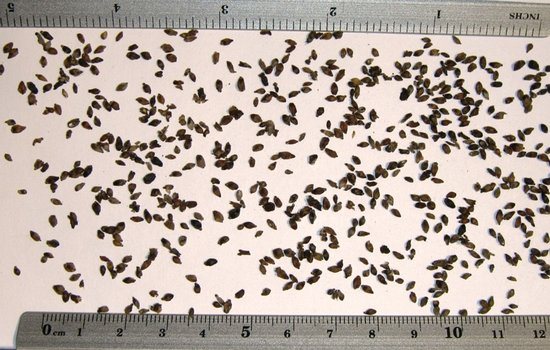

- Collect seeds in late August and early September, after most of the flowers have faded.
- After drying them for 2-3 weeks, prepare them for sowing by removing all empty and damaged seeds - to do this, put them in a glass of water and remove those that will not sink to its bottom.
- At the end of autumn, start sowing in open ground - for this, form a groove 5-6 centimeters deep, fill it with seeds and sprinkle it with earth on top.
- In spring, expect the appearance of the first shoots, and the beginning of active flowering of the burnet planted in this way will take place 2-3 years after sowing.
Important! Try to sow the burnet away from other plants, especially those with a poorly developed root system, as in the future it will almost completely take all the nutrients from its neighbors.
Vegetatively
The vegetative technique involves dividing the rhizome of the burnet into several parts and their subsequent germination in a greenhouse with further transplantation into the ground at the beginning of the warm period. Here is an example algorithm for this technique:
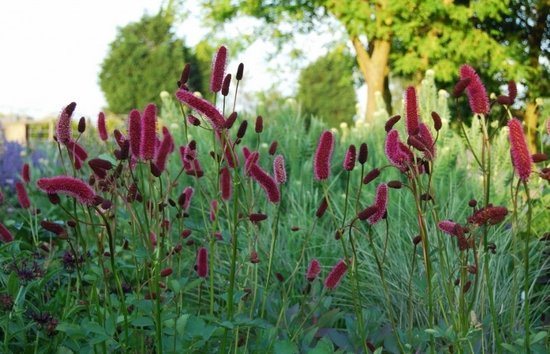

- Dig out the rhizome of the plant, carefully clean it from the ground and divide it with a sharp knife into even segments measuring 3-5 centimeters. This manipulation is best done at the end of November.
- Plant the resulting cuttings in separate pots in a greenhouse or at home, pour a little water over them and cover them with transparent glass or plastic wrap to prevent moisture evaporation.
- When the first sprout appears, remove the glass or film and water the plant with a little water every day so that the top 3-4 centimeters of the soil is soaked (the wetting depth can be checked with your finger or pencil).
- In the spring, after the average daily temperature rises to +7 .. + 10 ° С, you can start hardening the seedlings, taking them out for 10-15 minutes in fresh air.
- With the onset of May, mature and hardened plants can be planted in open ground, which, if desired and necessary, can be fertilized according to the algorithms written above.
Relation to temperature
Burnet is quite easily able to endure both severe winter conditions and hot summers, this is especially true for those plants that are planted near water bodies or not far from places of accumulation of surface groundwater. It is worth saying that the owl's arrow does not require particularly scrupulous preparation for wintering, it is enough to cut off all the stems that have not dried up on their own, and the plant does not need additional insulation.
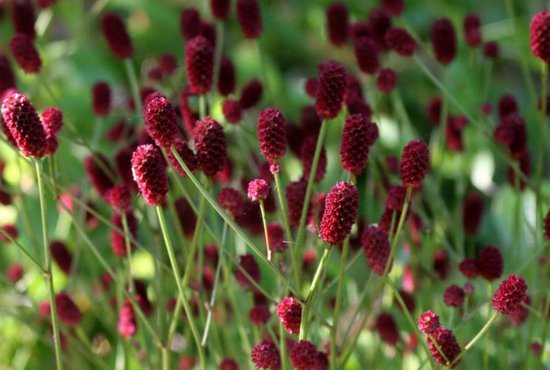

If the winter turned out to be with little snow, but at the same time cold, it will not be superfluous to scatter a small amount of mulch in the form of peat or sand over the supposed place of occurrence of the rhizome of this grass. However, in general, the burnet feels comfortable enough under a layer of snow, which, by the way, is recommended from time to time, in the case of a small thickness of its layer, to be thrown with a shovel at the place where the plant grows.
Possible growing difficulties
Burnet is a plant that is prone to self-seeding, therefore, in the event that you want to have aesthetically pleasing and controlled thickets of it, then it is recommended to cut off all dry inflorescences immediately after they are found. If you intend to collect seeds for re-sowing, then you should know that dry inflorescences cut at any time are suitable for this purpose.
In addition, we once again draw your attention to the fact that it is necessary to maintain an optimal balance of moisture and sunlight, which, on the one hand, would allow your plants to grow and develop normally, and on the other hand, would not be too scarce or excessive for them. ... This skill comes over time, so don't worry if you have some trouble with it at first.
Pests, diseases and prevention
Like most other wild plants, the burnet is rarely attacked by parasites and various diseases.
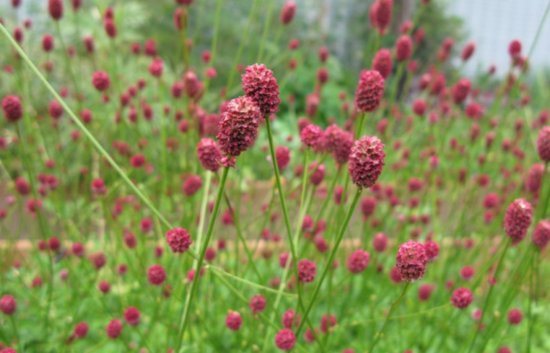

Of the diseases, the greatest danger is represented by a variety of fungi, among which it is worth highlighting the black leg, gray rot and powdery mildew.
The most dangerous parasites for burnet are slugs, sawflies and ants that parasitize on leaves and flowers, gradually eating them.
You can get rid of pests by treating your thickets of grass with a solution of an insecticide, which are very widely represented in many specialized stores. Treatment of diseases involves cutting off all the affected parts of the plant, up to the removal of the entire stem and rhizome of the diseased burnet and treatment with any fungicide, for example, Bordeaux liquid.
In order to prevent the occurrence of such processes in your plants, the same substances are used as for the treatment of an already arisen problem, only in slightly lower concentrations. It must be said that prevention is often carried out by spraying plants from a spray bottle at the beginning of active sap flow processes (in mid-spring). In order to prevent the development of fungal infections of seeds and increase their shelf life, they are often treated with foundation or formalin.
Important! When working with chemicals, be sure to follow all personal safety rules and strictly follow the instructions in the instructions for them.
So, we hope that this article helped you find all the information you are interested in regarding a plant such as a burnet.Treat your plot carefully and with love, form the most attractive and unusual compositions from your point of view, including a meadow, and your garden will be able to delight your family with its wonderful appearance and comfort for more than a decade!
Choosing the right place
Burnet is considered a resistant crop. Among gardeners, there is an opinion that it grows remarkably near water bodies. But in fact, these flowers feel great in sunny and semi-shaded areas. When choosing a soil, it should be remembered that the plant prefers fertile soil types with good soil moisture. The culture is also suitable for neutral, loamy and nutritious soil. It is categorically impossible to plant the plant in areas with constant stagnation of moisture, as this can harm it.
In addition, the burnet is a perennial, so it can be planted 1 time and for 20-40 years. She will not self-sow if the faded buds are cut off in time.
Burnet is considered an unpretentious crop, it is not attacked by pests, and it is also resistant to various diseases. If you create favorable conditions for the bushes, they will grow tall and powerful, the leaves will be long, and the flowering will be plentiful. The culture copes well with weeds and is able to completely displace them. But gardeners still recommend from time to time to loosen the soil and break the crusts on its surface.
Particular attention should be paid to proper watering, since in nature the burnet does not practically tolerate drought. For this reason, it needs regular irrigation. The plant needs to be watered 2-3 times a week (depending on weather conditions). No moisture is needed during the rainy season. Under 1 burnet bush, 2-3 liters of water should be applied. It is better to do this in the evening, when the sun hides. Otherwise, it can burn the roots of the plant and lead to its death. Burnet will respond well to leaf spraying. For such a procedure, you need to take a spray bottle, fill it with warm water and treat each part of the plant. Regularity of manipulations - 2-3 times a month in severe drought.
Burnet loves various feeding. The first fertilization should be carried out with mineral complexes, it is performed immediately with the onset of heat. Then, during the summer season, it is necessary to enrich the soil with organic matter purchased from florist shops. When using fertilizers, the indicated proportions must be strictly observed. Top dressing should be applied to the ground near the roots. In addition, the burnet is fed:
- dry yeast (20 g for each bush);
- lemon juice diluted with water (1: 2);
- kefir (300 ml under a bush).
An important stage in caring for a burnet is the tying of a culture. Sometimes, under the influence of strong winds, tall plants can bend and lose their decorative effect. In this case, they must be tied up with special metal rods and a thin rope. Blunt Burnet is considered a winter-hardy crop, so it does not need special shelter for the frost season.
Partners
Burnet goes well with cereals, mountaineers, astilbe, daylilies, meadowsweet, basil, in general plants, natural appearance.
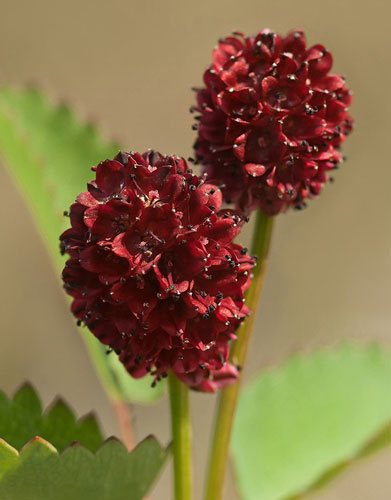

The medicinal properties of such a plant as burnet have been known to people in our latitudes for a long time. In the past, it was rarely cultivated separately, since this plant could be found almost everywhere, however, with the change in climatic and ecological conditions, it began to gradually disappear from the fields and meadows. In our article you will find information about the features of planting, caring for this herb and a botanical description of its varieties.
Breeding features
The most common way to get Blunt Burnet in your garden is to use the division method.But it is suitable only if the gardener has familiar summer residents who already have a growing culture. It is recommended to carry out such reproduction in early spring. It is necessary to dig up a bush and separate a smaller part of the rhizome from it. After that, drop her off at your site. The diameter of the hole should be approximately 30 × 30 cm, and the depth depends on the dimensions of the rod (average 20-25 cm).
If this option does not suit you, then you can try to grow a crop from seeds that are sown for the winter, so that the first shoots appear by spring. But note that burnets grown in this way will bloom only for 2 or 3 years.
If you provide such a culture with proper care, then it will endow its owners with beautiful buds and will delight the eye with an incredibly original appearance. Burnet can be used to decorate your garden or artificial pond.
Pete Udolph, a Dutch landscape designer known for his nature-style gardens, was the first to use burnet as ornamental plants.
You should not expect lush flowering and large flowers from the burnet. All of them have medium-sized inflorescences in the form of cones or brushes of white, pink and red.
It is this spectacular combination of delicate leaves and elegant inflorescences that gives the entire plant a unique look. Burnet will decorate any composition in a natural style with numerous sprays of its inflorescences.
Burnet are unpretentious plants. They can grow both in sunny areas and in partial shade. The main thing is that the soil on the site is loose, nutritious and moist. Burnet are planted in combination with cereals, steep, mountaineers, basil, daylilies, meadowsweet and other plants of natural appearance.
The most common representative of the genus is burnet medicinal
.
This is a spectacular slender rhizome perennial up to one and a half meters high. Leaves are compound, consist of several lobes, small inflorescences of a rounded dark red color rise above them on thin stems. Blooms in August.
The varieties obtained on the basis of medicinal burnet are more compact, their height usually does not exceed 80-90 cm, they keep their shape well and do not need support.
Burnet medicinal "Tanna"
0.8 m high and bright red inflorescences. Its numerous red "buttons" of inflorescences especially adorn the foreground of flower beds.
A good variety of burnet "Pinck Tanna" with pink inflorescences.
Burnet "White Tanna" Beautiful dissected foliage of bluish color. White inflorescences. The flowering is profuse and long lasting. Grows in both sun and shade.
TOMenzies' roast bread
blooms one of the first in late May - June. Large dark green oval leaves with a slight bluish tinge, compact size up to 60 cm and beautiful flowering of lush, burgundy elongated inflorescences.
Small-flowered Burnet
an elegant plant: it has really small flowers, like most species, by the way. They are collected in rather long, narrow, curving snow-white inflorescences-earrings. This species has leaves of a different shape - they are long, narrow. Small-flowered Burnet reaches a height of about a meter or more. Blooms in the second half of July.
Have blunt burnet
leaves are rounded-oblong with a bluish tinge. Outwardly, she is very similar to
because the magnificent.
The only difference is that the inflorescences of the magnificent are more magnificent, and the leaves have a more pronounced bluish tint. Both species have spectacular, up to 6 cm long, pink inflorescences that adorn the garden in August throughout the month. These species are compact, but nevertheless do not keep their shape, they fall apart.
Blunt Burnet "Lemon Splach"
This burnet variety has unusual shiny, variegated leaves: uneven yellow spots are scattered on a green background. Bloom is very abundant from July to September in large purple inflorescences.
Another variegated burnet variety "Daily Marble"
Leaves are strongly dissected, white-bordered, light bluish tint. The flowers are bright, burgundy. Beautiful large plants 1m high with long flowering in the second half of summer, they look good in flower beds and in separate groups among the lawn. Prefers partial sun and moderately moist soil.
Burnetus officinalis grows wild in Europe, Siberia, Kazakhstan, Asia and the Far East. This herbaceous perennial plant up to one and a half meters in height is ubiquitous in glades and banks of water bodies.
The spectacular appearance makes it decorative, especially the varieties bred not so long ago, while the rhizome of the burnet is endowed with a number of useful medicinal properties.
Distribution and habitats
Most often, this plant can be found in fields, on flooded and dry meadows, on flattering edges and glades, along river cliffs and banks, in thickets of some bushes. Especially a lot of it can be found in swampy areas. A typical type of burnet is listed in the Red Book of Latvia, some regions of Ukraine and Russia.
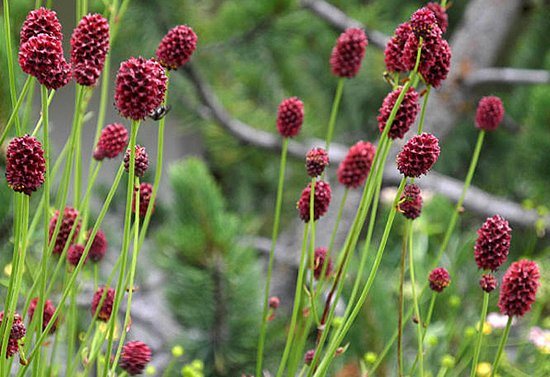

The area of the burnet is spread over the territory of almost all of Europe, North America, as well as regions of East Asia with a temperate climate. Solitary specimens can also be found in Central Asia, in the Tien Shan mountains. In Russia, the plant is mostly distributed in its Siberian part, the Far Eastern regions, the European part and the Caucasus.
Did you know? The Russian name of this herb is a complete tracing of the Latin "Sanguisorba", which literally translates as "sanguis" - blood, "sorbeo" - to absorb.
Types and varieties of burnet
Grows in the steppes of the Russian Federation and Western Europe. At first glance, it is not easy to distinguish a representative of the Rosaceae family in it, since its dark purple little flowers, forming dense spike-shaped inflorescences, are very different from those of roses and apple trees.
- The most popular variety of medicinal burnet is now 0.8 meters high, with variegated red inflorescences. Other varieties and types of burnet (of which 12) outwardly look about the same, the difference lies only in the color and length of the inflorescences, the shape and size of the leaves.
- For example, the variety burnet pink brushes
characterized by light pink inflorescences and dense, beautiful foliage.
- has dark pink flowers and green pinnately dissected leaves with incised edges.
- characterized by green leaves covered with a white border and narrow pink inflorescences about 5 cm long.
Not tall (up to 50 cm in height) burnet is magnificent
- a species that grows in the Ussuri region. Its unusually decorative qualities are manifested in long, dense, shaggy pink inflorescences that stand out against the background of gray foliage.
Another view - stupid burnet
(
obtuse
,
obtuza
) - grows in the highlands of Japan. This cute representative of the genus is characterized by a height of 1 meter and drooping fluffy bright pink inflorescences.
Native to North America, it grows in meadows in high humidity conditions, reaching as much as 2 meters in height. Its gracefulness and majesty is expressed by powerful erect shoots, on which white inflorescences flaunt.
It has powerful branched stems, stretching 1.8 meters in height, with numerous oblong (up to 7 cm) narrow drooping inflorescences of white or purple color. According to the name, the leaves of this species differ from those described above by a small width - 5-10 mm.
Botanical description
Burnet belongs to perennial herbaceous plants and has many different popular names, the most popular of which are: meadow, bloodstain, cold grass, wild mountain ash, owl arrow.A typical representative of the genus Burnet is medicinal, also known as pharmacy, or glandular.
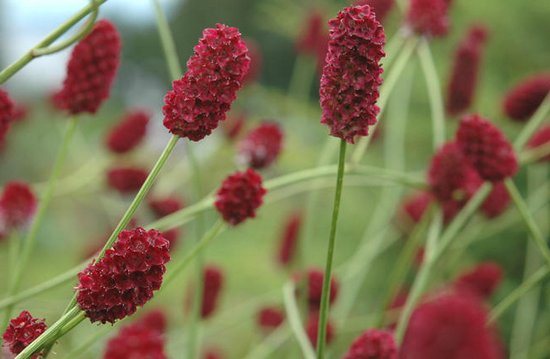

Burnet has a long, usually horizontally placed thick rhizome, the length of which reaches 10-12 centimeters. Multiple thin and long fibrous roots extend from the central rhizome. The stem is erect, from 30 centimeters to 1 meter high, usually single, its upper part most often branches, has a continuous cavity inside, smooth to the touch, naked.
Did you know? According to an old tradition, all young children were treated and prevented from neurological diseases with the help of this plant. “Lying in a meadow among the bloodstop and inhaling their aroma” - this was the traditional recipe for good health.
The leaves, located in the root area, are long-petiolized, rather large in size, pinnate, their upper part is dark green, shiny, the lower one is lighter and dull. Leaves on stalks are unpaired, sessile. All of them have an elongated ovoid shape and sharp, sawtooth edges.
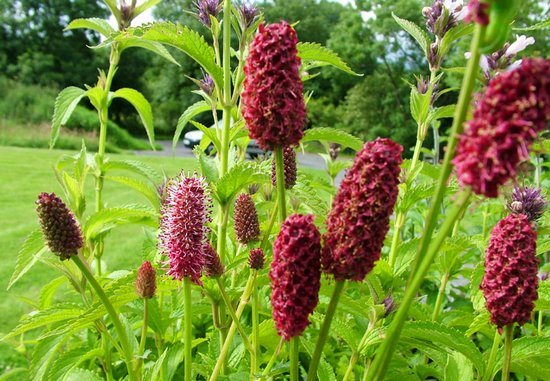

Flowers are small in size, usually dark red, form heads in the form of an oval or spike measuring 1.5-3 centimeters, they are located on long peduncles. Bracts - long, hairy, brown, with membranes. The flowering process takes place in the summer. As fruit, the plant produces dry tetrahedral brown nuts, 3-5 millimeters in size.
Throughout the season, such perennial plants will delight you with continuous decorativeness: hosta, badan, astilba, heuchera, hellebore, sedum, viola, tradescantia.
Burnet planting and care in the open field
Whimsical care for burnet is not peculiar. This plant requires very little for normal development, so it feels great both in well-lit areas and in semi-shaded areas.
From what will clearly benefit the burnet in growth and flowering, the looseness and fertility of the soil should be distinguished. The latter is ensured by the use of ash, superphosphate or humus, which form an auxiliary layer at the bottom of the planting pit.
Fertilizers are recommended to be applied in the spring, in the first days of summer, or at the end of autumn. It is not worth replanting the plant until it reaches 5 years of age. It should also be noted that self-seeding is characteristic of the burnet, which, if necessary, can be prevented by cutting off the faded flowers at the right time.
Burnet is one of the cold-tolerant plants that does not need to be dug up before the onset of frost. Moreover, it perfectly tolerates winter without shelter and is almost not exposed to pests. Thanks to such impressive advantages, she is able to live up to 40 years with proper care (the average life is 10 years).
Choosing a place for landing
It should be said that an open, sunny area is required for burnets, but partial shade is also allowed. The soil should be loose, well-drained and fertile. If the soil is depleted, fill in humus or compost into the soil from spring, you can add complex mineral fertilizer granules to the planting holes.
The moisture capacity of the soil is important, but moisture stagnation is not encouraged; do not plant in lowlands and in flooded areas. Slightly acidic and neutral soils are suitable for the reaction.
Burnet medicinal properties and contraindications
The healing properties of burnet include hemostatic, astringent, antimicrobial, strengthening and others. The main healing potential of the plant is concentrated in the root. Burnet root includes tannins, of which it and rhizomes contain approximately 13-20% in terms of the total chemical composition.
There are medicinal preparations based on the root of the burnet for oral and external administration.In the first case, for example, the broth is used in a teaspoon no more than 5 times a day in order to strengthen the immune system, get rid of diarrhea, and reduce intestinal motility. External use involves lubricating inflamed areas of the skin with a decoction. At the same time, the roots, leaves, and flowers of the plant are among the components of various medicinal teas, such as:
Gastric
, which contains rhizome with burnet roots (3 parts by weight), rhizome with valerian roots (2), marshmallow roots (3), oak bark (4), calendula flowers (2), leaves of mother and stepmother (2), leaves walnut (2), knotweed (3), bird cherry berries (3) and eucalyptus leaves (1).
Tea should be brewed by pouring 1 tablespoon of the collection with 1 glass of boiling water, standing for 6 hours in a thermos, then filtering. Take it half a glass three times a day to eliminate problems with diarrhea (with enterocolitis);
Female
consisting of rhizomes with roots of burnet (2 parts by weight), chamomile (1), sage leaves (2), peppermint leaves (2), full-color field color (2), overstepping white (1), motherwort (2) , rowan berries (4).
Tea is brewed, pouring 3 tablespoons of the collection with 1 liter of boiling water, and taken in equal portions 6 times a day in case of violation of menstruation with severe pain and neurasthenia;
Pectoral
, including the rhizome with the roots of the burnet (2 parts by weight), calendula flowers (3), thyme (1), Crimean rose petals (3), spring primrose (2), white overgrowth (1).
You need to brew tea with 2 liters of boiling water for 6 tablespoons of the collection. It is consumed in equal portions 7 times a day for the treatment of croupous pneumonia with pleurisy.
Sanguisorba raw material procurement
For the preparation of raw materials (rhizomes), adult plants at least 5 years old are suitable. Dig in at the end of flowering and the beginning of seed ripening (August-September). Dig up the root and clear from the ground, plant individual pieces again in the soil for the development of new plants. Rinse the collected roots thoroughly in cold water and dry in the fresh air, but under a canopy.
Please note that the remnants of the stems should be removed after drying. Cut the roots into narrow strips and dry them under the sun or in special dryers at a temperature of 45 ° C - under the influence of a higher temperature, the roots will turn black and lose their medicinal properties. Place the blanks in fabric bags or paper bags, store in a dry place for 5 years.
Active ingredients
The rhizomes and roots of Burnetus officinalis contain tannins (12-20%), presented as hydrolyzed (witch hazel) and condensed (halocatechin), starch (about 30%), saponins, dyes, essential oil (1.8%). The aboveground mass contains flavonoids (glycosides of kaempferol and quercetin, in particular rutoside, as well as cyanidin glycosides), tannins, triterpene glycosides, betulin, ursolic and tormentic acids, chlorogenic acid. Ascorbic acid is found in the leaves.
Plant varieties
There are at least twenty types of this herb in the world. The following varieties are most often found.
Burnet medicinal
Important! This plant is currently listed in the Red Book and protected by law. It also has medicinal properties, with the help of which it can cure many ailments and bring great benefits to people.
Burnet medicinal
This type of plant includes:
- Pink Tanna - This plant creates thickets of wilted ears. The flowers are pink.
- Tanna is a shrub that grows up to eighty centimeters high. The flowers are colored red or burgundy.
Burnet stupid
The homeland of this plant is Japan. It grows to a height of one meter. It has large fluffy pink inflorescences. The stems of a plant of this species begin to branch out at the root system. The most famous variety is Alba. It has delicate white flowers.
Burnet of Menzies
This plant grows to a height of sixty to one hundred and twenty centimeters in height. It blooms in bright pink. The length of the inflorescences reaches up to seven centimeters. The culture does not begin to flourish until June at the earliest.
Burnet of Menzies
Alpine Burnet
The grass grows up to eighty centimeters. The bumps on the stem are yellowish-green in color and the leaves are heart-shaped.
When the grass is harvested
The harvesting of grass roots falls in the month of September. This is the moment of fruiting burnet. The collection of material is carried out using a shovel. Rhizomes must be carefully dug out, but in no case pulled out of the soil.
Then the rest of the earth is shaken off the plant, the roots are washed in cold water and dried. After that, you need to completely cut off the stems, divide the material into even parts no more than twenty centimeters, wither in the fresh air and send for drying. Rhizomes are dried in the attic, in an oven or dryer.
Important! Do not dry the plant on metal trays or grates. In this case, the roots turn black and lose their properties.
The dryness of a medicinal material can be determined by its fragility during bending. Raw materials can be stored for five years.
Burnet grass has a universal effect in the treatment of folk methods. For these purposes, the root system is harvested. It should also be taken into account that this herb has absolutely no contraindications and is allowed for use by people with allergies, pregnant women and even a small child. Nevertheless, before using this remedy, you need to consult a doctor and follow his instructions.
Holland is home to the most popular postmodern designer of the 21st century, Pete Udolph. It was thanks to him that the direction in the creation of flower beds, which began in Germany and received the name "new wave" there, became a leader in urban landscaping and among advanced gardeners. Herbs, cereals and simple perennial flowers began to enter the garden fashion, which no one would have considered as an object of garden design two decades ago. And with one of these plants, let's call it conditionally "simple", but charming, I would like to acquaint you better. Burnet (Sanguisorba) quickly and rapidly entered natural-style flower gardens and is in demand by landscape designers like never before.
What's so special about a burnet?
Burnet does not differ in large bright flowers and dense foliage, its charm is in lightness, airiness and elegance. If you plant it in the foreground, then with its openwork foliage, it will create a translucent screen through which the flower garden will be viewed. Due to the long and thin, almost imperceptible peduncle, the inflorescences seem to float in the air, creating an additional frame for the plantings.
Due to the long and thin, almost imperceptible peduncle, the inflorescences seem to float in the air, creating an additional frame for the plantings.
Burnet meets all the basic requirements of designers for "Dutch" or "new wave" flower beds:
1. beautiful foliage and modest, dull, but original flowers - dense small inflorescences have a varied shape, from small bumps to long spikelets or drooping earrings; 2. flowers of a beautiful color - white, pink, red, depending on the species; 3. the flowering period is long, up to two months; 4. does not lose its attractiveness throughout the year - in autumn the foliage turns yellow and orange, and dried inflorescences on high peduncles do not fall off even in winter and look very beautiful; 5. keeps its shape well; some species, however, fall apart, but they still look good, you just need to choose the right place for them; 6. Reproduces well by self-seeding and rhizomes, but not aggressive, you can not control planting.
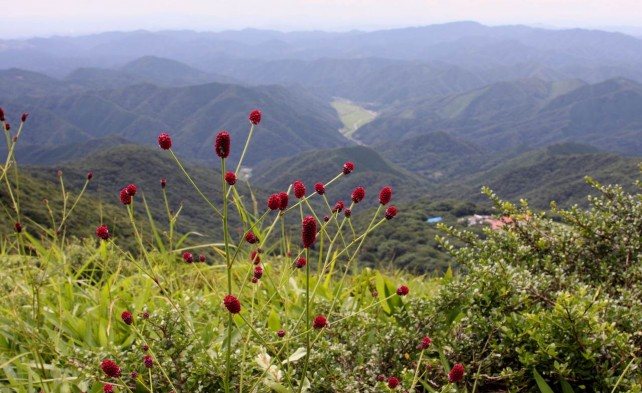

burnet in nature
burnet with perennials
Ideal plant for the "lazy"
This perennial is unpretentious: a lot of sun, moist fertile soil, weeding and loosening - that's all it needs. If the soil is very poor, in early spring and a couple of times during the season, you can carry out standard fertilizing with mineral fertilizers and organic matter. Apply fertilizers carefully - the powerful rhizome is located shallow, it is easy to damage it when mixing the fertilizer with the soil. Weeding and loosening can be replaced by mulching with any organic material such as cut grass. Very winter-hardy, not affected by pests, does not get sick.
Burnet is easily re-pollinated, resulting in very interesting hybrids. If you need to propagate a varietal burnet or a plant of the original species, propagate in divisions, and cut off the inflorescences immediately after the end of flowering.
Reproduction by seeds. The seeds are sown in the fall. The sowing depth is about 1 cm. The seeds are evenly distributed and sprinkled with a layer of peat. Until the next autumn, the seedlings grow, then they are planted in a permanent place at a distance of 0.5 m. In the 2-3rd year, the plant begins to bloom.
Reproduction by rhizome. To obtain divisions, a plant not younger than 5 years of age is carefully dug up, pieces of rhizome with growth points are cut off, the cuts are sprinkled with ash and planted in a new place in May or August.
The genus Sanguisorba is not numerous - only about 20 species. They differ mainly in size, foliage color, as well as in the shape and color of the inflorescences.
The tallest of the common among gardeners are the common burnet (S. officinalis) and the Canadian burnet (S. canadensis). Plants grow up to 1.5 m and higher, differ in the color of inflorescences - in the medicinal burnet, they have the form of small cones of a dark red color, in the Canadian - white spikelets.
Blunt Burnet (S. obtusa) and Menzies' Burnet (S.menziessii) are more compact, about 1 m tall. Both plants are loved by designers for the elegance and beauty of large, up to 7 cm, pubescent inflorescences of bright pink color, in dull ones - drooping, similar to alder catkins, in Menzies - upright. Menzies' bloodworm is the only early flowering, blooming in May, the rest in August-September.
Menzies' bloodworm is the only early flowering one, blooms already in May, the rest - in August-September.
medicinal burnet
canadian burnet
Bloodworm blunt
The magnificent burnet (S. magnifica) is very similar to the dull burnet in the color and shape of the inflorescences - pink pubescent drooping catkins, but the bush is low, up to 0.5 m tall.
The variegated selection burnet is very attractive. Particularly good is the Little Angel variety - a small, up to 0.4 m tall plant with beautiful bluish leaves with a white border around the edges and oval cones of dark red inflorescences.
burnet is magnificent
Menzies' bloodworm
Burnet variegated
Popular varieties
Burneta varieties: tall powerful Red Thunder with small, almost round burgundy inflorescences, low compact Tanna with small red balls of inflorescences and Pink Tanna with pink drooping earrings.
Blunt burnet varieties: variegated Lemon Splach with irregular yellow spots on green leaves, Alba with white catkins - the most unpretentious, grows on any soil, and Lilac Squirrel with drooping, very pubescent pink inflorescences, unusually large for burnet, drooping pink inflorescences up to 10 cm long.
How to make a bloodworm "work" in your garden
Of course, creating a "new wave" style flower garden on your site is not easy. But a small plot in a natural style is a task for an enthusiastic gardener. Plant the area with small groups of burnet, miscanthus or any other grasses - and you get an unusual flower garden, reminiscent of a natural meadow. Moreover, it is absolutely not scary if all the plants are not in height, as is usually done in classic flower beds.
grade Red Thunder
grade Alba
Pink Tanna cultivar
In flower beds, using a burnet, you can create an openwork screen for plants with less spectacular foliage, tall forms with long peduncles will decorate the background of the mixborder, giving it lightness, airiness and dynamics due to inflorescences constantly swaying from the movement of air, and medium and short ones will look great in the foreground.
Low-growing burnet, especially magnificent burnet, look good on alpine slides. Taller forms can also be planted against the background of large stones, for example Tanna or Pink Tanna.
in mixborder
burnet and cereals
mixed landing
The faster and more intense the rhythm of modern life, the more popular among gardeners are gardens in a natural style, because turning to nature is the best way to relieve stress and recuperate. And maybe that is why the “new wave” flower gardens are so popular today, where a simple but accent plant - the burnet, is often found.
Tags:
Description: Burnet is common in Europe, Kazakhstan, Siberia, the Far East and Central Asia.
Burnet grows in glades, meadows, along the banks of rivers. Herbaceous rhizome perennial. Plant with feathery leaves and long thin stems. Burnet inflorescences end dense drooping or capitate, spike-shaped, from small flowers.
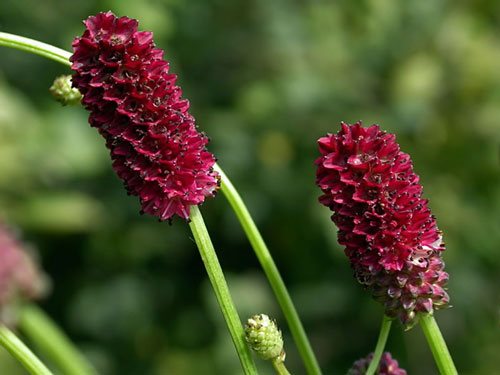

If once a beautiful flower (peony, rose, lily) was mainly valued in a plant, now attention is drawn primarily to other characteristics: an elegant look, graceful leaves, spectacular harmony in the price. Actually, this is why the burnet went from a medicinal plant to the category of fashionable ornamental plants, and new varieties of modern selection of burnet became the desired dream of an advanced florist.
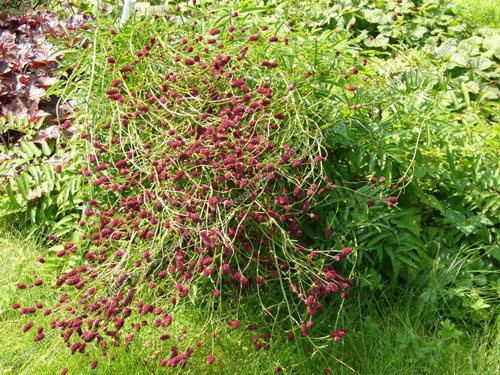

Burnet is a grass with odd-pinnate leaves, dense dark purple inflorescences - cones - hover above them on thin branched stems. Burnet owes its name to the hemostatic and astringent properties of rhizomes. Looking at the burnet, it is not immediately possible to guess that it belongs to the Rosaceae family, so much its flowers differ from the usual flowers of Potentilla, rose and apple trees. Burnet flowers without corolla, very small with a colored calyx, from it one can see long stamens collected in spike-shaped dense inflorescences.
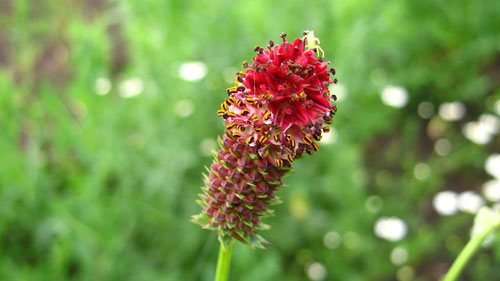

Possible care difficulties
Common problems are associated with non-adherence to agricultural practices. Abundant self-seeding will lead to thickening of the plantings.
At the same time, the bushes stretch out and lose their attractive appearance. There is a danger of fungal diseases.
Different species and varieties growing nearby are often cross-pollinated.
Their inflorescences acquire an uncharacteristic shade and shape.
To avoid this difficulty, it is necessary to cut off the wilting inflorescences in a timely manner.
In dry years, foliage can turn yellow and wither.
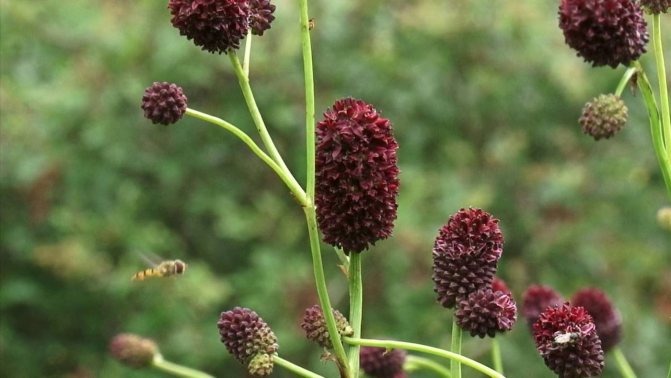

Bushes need to be shed abundantly once a week.
Badlands can negatively affect the number and shade of inflorescences.
It is necessary to fertilize the flower bed three times per season.
Mineral dressings alternate with organic: mullein or diluted chicken droppings.
Burnet medicinal during pregnancy
Burnet, the beneficial properties and contraindications of which it is important to know before use, is not recommended during the period of waiting for a child and feeding with milk. The ability of the plant to stop blood and have an astringent effect can adversely affect the process of bearing the fruit when consumed orally with drinks based on it.
However, it is allowed to use herbal remedies for local treatment of skin ailments, as well as for taking sitz baths in the treatment of postpartum hemorrhoids.
Is it possible for children?
Burnet is allowed in childhood, from birth. Drinks made from rhizomes are recommended for diarrhea and other intestinal infections.The healing agent will cleanse the body of harmful bacteria and viruses, improve the functioning of the digestive tract, restore the intestinal microflora, and also have a disinfecting effect.
The daily allowance for children under 1 year old should not exceed 200 ml, at an older age - 400 ml.
Broth for babies:
- Preparation of a drink. 2 tsp roots are poured with 1 tbsp. boiling water, simmer for 30 minutes, filter without insisting.


- Application. 25 drops the drink is diluted in 1 tsp. cooled boiled water and give to drink 30 minutes before a meal 4 r / day. Duration - until complete recovery and then another week to consolidate the result.
- Effect. The child's stool is normalized, intestinal colic goes away.
Infusion for children from one year old: steamed with a glass of hot water 2 tbsp. l. ground roots, warm up for 30 minutes, leave to brew for 1.5 hours, filter. Give 5 ml 4 r / day until complete recovery, then continue the course for another week, reducing the frequency of receptions first to 3, then to 2 r / day.
Burnet is recommended in the treatment of stomatitis (tonsillitis) and conjunctivitis in children:
- For the oral cavity. 1.5 tbsp. l. boil roots in 200 ml of liquid, warm up for 10 minutes, leave for 30 minutes, filter. Rinse up to 5 rubles / day.
- For eyes. Steam 1 tbsp with a glass of water. l. ground rhizomes, leave to simmer for 15 minutes. Insist 2 hours, filter. Wipe both eyes with a sterile cloth soaked in the ready-made product, up to 5 r / day.
Name
Latin term (Sanguisorba officinalis) comes from the words "blood" and "absorb", which perfectly reflect the main function of the plant - to stop the blood. The epithet "healing" reveals the scope of the herb. The Russian name for the burnet is an exact translation of the original Latin term.
Alternative names
The people came up with many other designations for this useful flower: hernia, blood-bread, forest, wild mountain ash, thigh, bumps, silver leaf, redhead, meadow, radovik.
Root and rhizome
Burnet has a treasure trove of healing properties in its roots, reaching a length of 12 cm, characterized by a woody, thick and horizontal rhizome.
Dried and ground root is used in the treatment of the following diseases:
- diarrhea of various genesis;
- bleeding in various organs (uterus, lungs, intestines, stomach, kidneys, etc.);
- profuse menstruation;
- ulcerative colitis;
- chronic enterocolitis;
- inflammation of the oral cavity;
- various lesions of the skin;
- hemoptysis.
The root is used in various forms: lotions, compresses, powder; sitz baths (for hemorrhoids); douching (for gynecological ailments).
A bit of history
The ancient authors do not mention the use of burnet. The first mentions in Europe date back to the era of Charles V, when it was used for forcing worms from horses. Since the Middle Ages, its hemostatic and astringent properties have been mentioned. The earliest information in printed sources about the use of burnet in medicine dates back to 1550. The original source reports on its use as a hemostatic agent for bloody diarrhea and excessively heavy periods. Actually, the literal translation of its Latin name speaks of the ability to stop blood. It is mentioned in the writings of Lonicerus and Matiolus, who also note mainly hemostatic properties and recommend, among other things, for "female diseases". Outwardly, Mattiolus recommends using the decoction as a wound healing agent for fistulas and cancer.
|
|
N. Kulpeper, who considered the action of plants under an astrological sauce, believed that this plant, with prolonged use, strengthens the body and soul. Preparations from rhizomes were considered a cooling, astringent and wound-healing agent, useful in inflammatory and pulmonary diseases (including tuberculosis), gastric bleeding. They were also used to maintain pregnancy.
In Russia, especially in Siberia, the beneficial properties of the burnet were well known. Here is what Dr. I.A. Dvigubsky: “The root, which has an astringent taste, is used by the common people for diarrhea. Flowers deliver honey to bees, and the root can be used to make leather.The root and grass are used by veterinarians in animal diseases. "
Leaves and stems
Leaves and stems contain less tannins, but are no less medicinal. Their main purpose is to stop blood loss.
Use these parts in the following cases:
- bleeding of various genesis;
- hemoptysis;
- damage to the gums;
- tuberculosis.
Leaves and stems have wound healing properties, therefore, fresh they are recommended to be used for minor skin damage.
Healthy herbal tea
Burnet tea making:
- mix in equal proportions rhizomes and leaves of medicinal herbs. Pour 1-2 tsp. mix 250 ml of boiling water and drink a glass of 2 r / day.
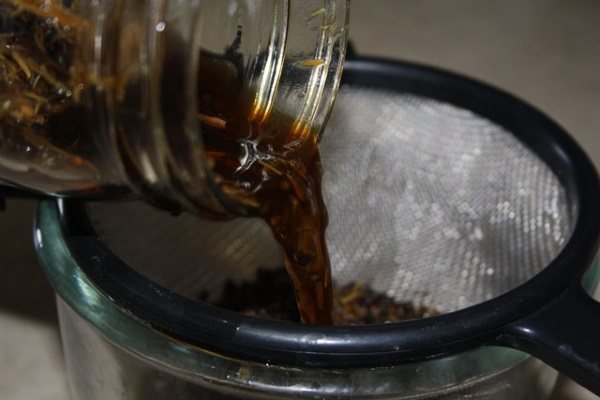

Healthy tea is also prepared from the flowers of the herb, using them alone or in combination with the root part / leaves.
Contraindications
In moderate doses and with short-term use, no longer than 2 months, Burnet does not have any negative effect. Side effects include the appearance of minor allergies, gastrointestinal upset.
In this case, the plant has a number of contraindications:
- individual rejection of the components of the herb;
- the presence of vascular thrombosis;
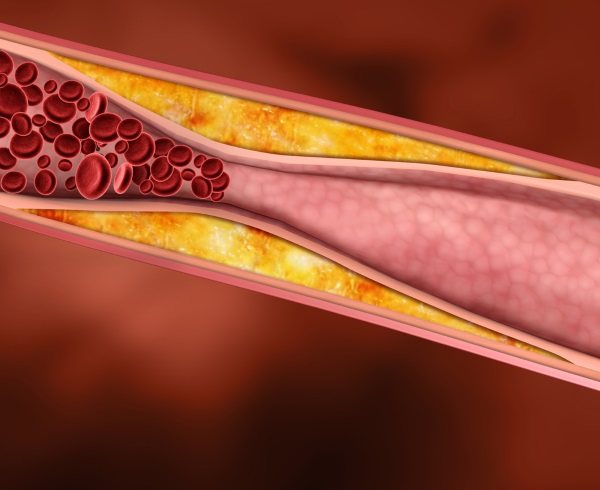

- hypertension (the herb provokes a narrowing of the vascular system);
- the presence of regular headaches against a background of hypertension;
- expectation of a child and lactation period.
In addition, funds based on the herb in question must be stopped when constipation develops, since the substances in their composition slow down the intestinal performance.

